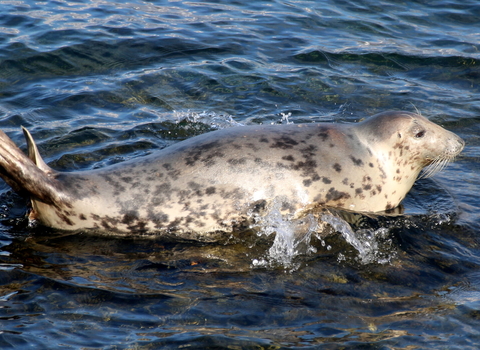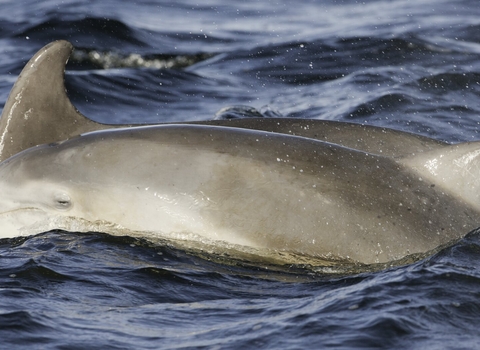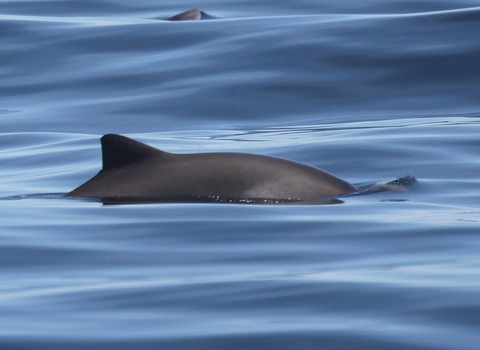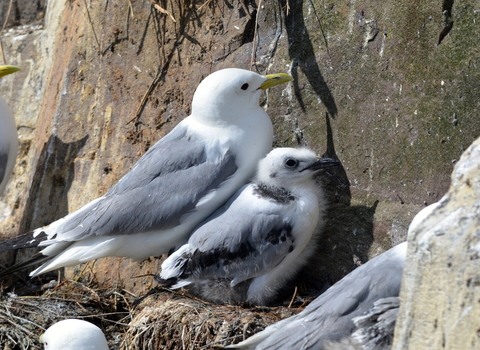Grey seals (Halichoerus grypus) are mammals that are closely related to bears. They are usually seen individually in the water or hauled out in small groups at sites called ‘rookeries’ where they rest, breed and moult. Females reach maturity at 5-6 yrs, giving birth to a single pup between September and December every year. Pups have white coats when they are born. They are nursed by their mothers for about 17 to 18 days. In this time the pup gains 2kg of weight a day due to the high fat content (60%) of its mother’s milk.
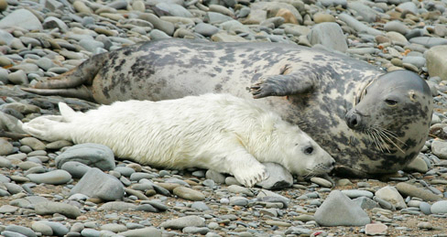
Janet Baxter
What do they look like?
Atlantic grey seals have a very distinctive head and their scientific name actually means “ sea-pig with a hooked nose”. Males are darker with light patches and an arched ‘Roman nose’. Females are lighter with dark patches and a smaller, straighter nose.
What do they eat?
They are opportunistic feeders and will eat a variety of fish including sand eels and cod, plus crustaceans, squid and octopus.
Monitoring seals
Photo-identification techniques have been developed to help scientists recognise individual seals from permanent colouration patterns in their fur. This can help to monitor populations and movements of animals.
Where can I see them?
Nearly half of the world’s population is found around the British Isles, mostly in Scotland but a number live along the Welsh coast. One of their favoured breeding grounds is Cardigan Bay with a population of 5500 found south of Aberystwyth. Ramsey Island and Cardigan Island are popular breeding areas for grey seals as well as various beaches and caves locally including Cwm Tydu.
Atlantic Grey Seal life history statistics
| Size | Weight | Lifespan | |
|---|---|---|---|
| Male (bull) | up to 3m | up to 250kg | up to 25 years |
| Female | Slightly smaller | 150-180kg | up to 35 years |
| Newborn | 0.8-1.5m | 15-30kg |

